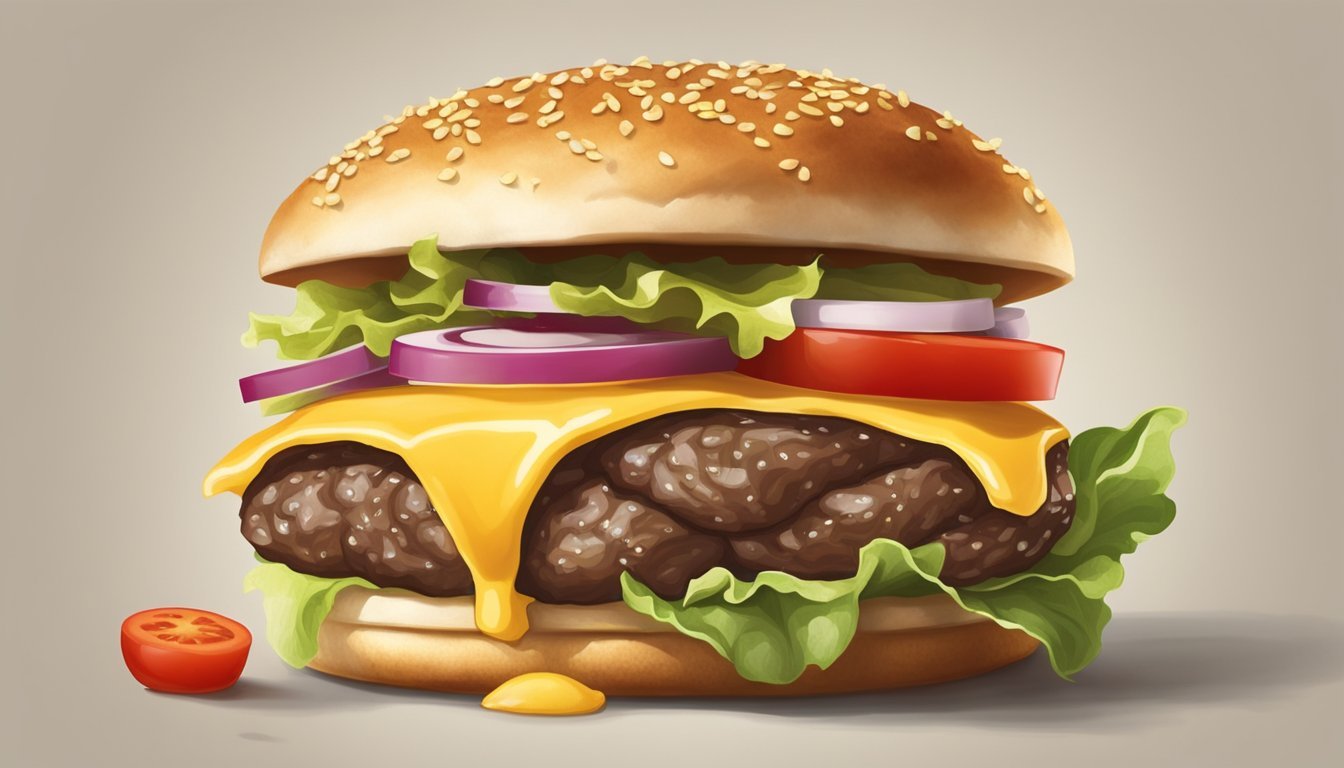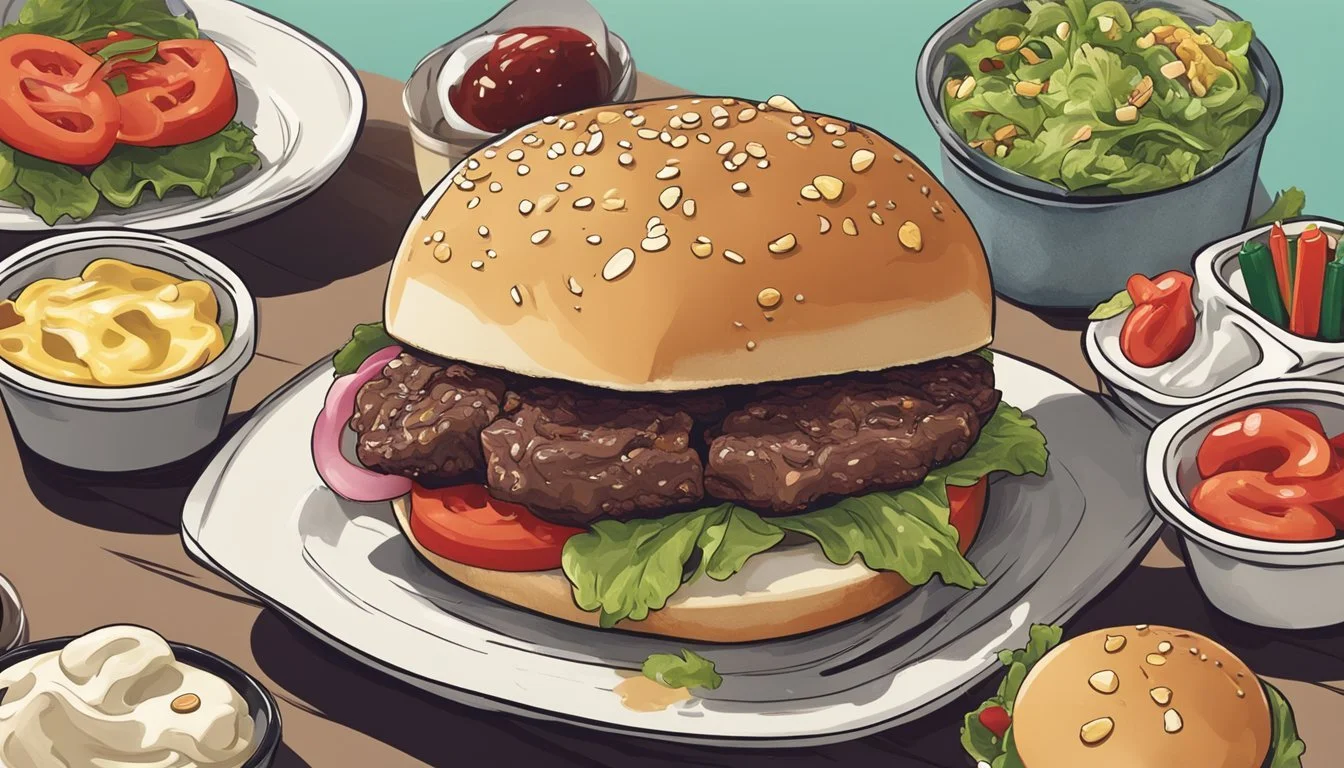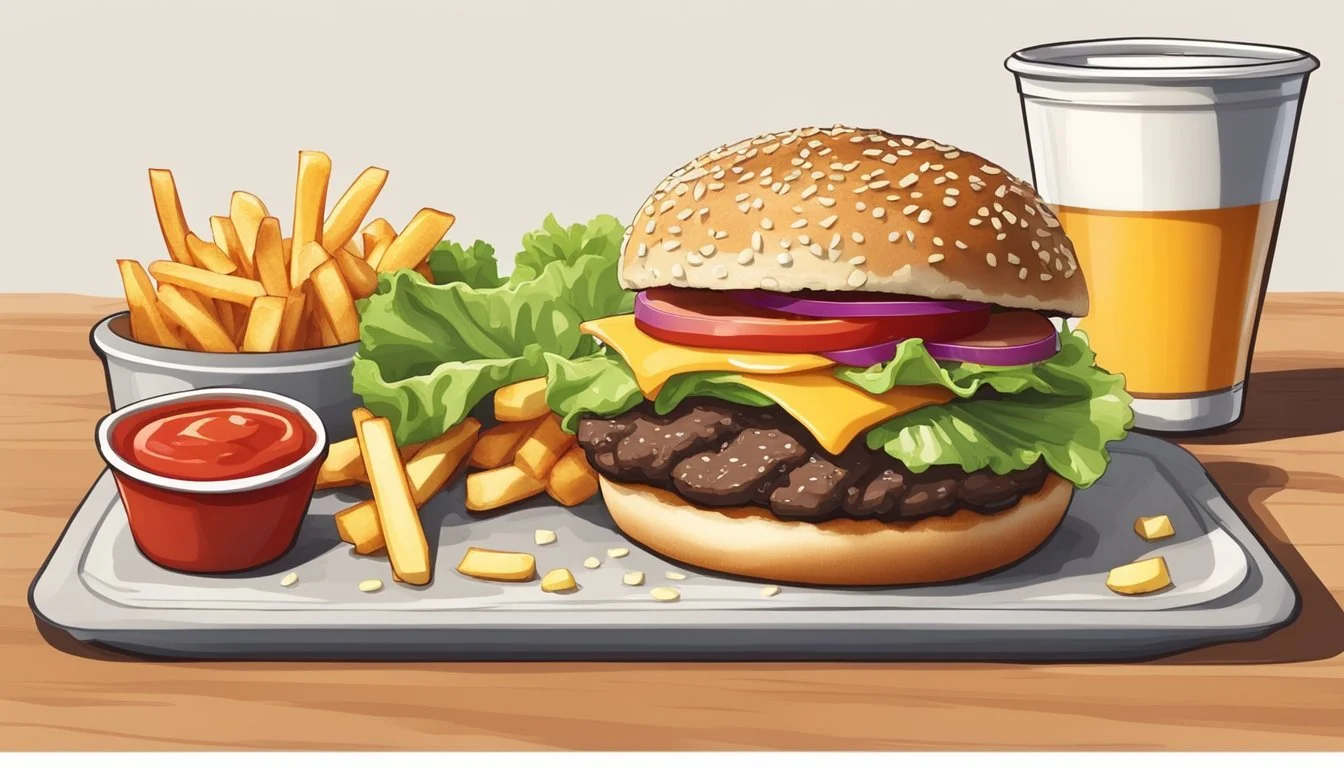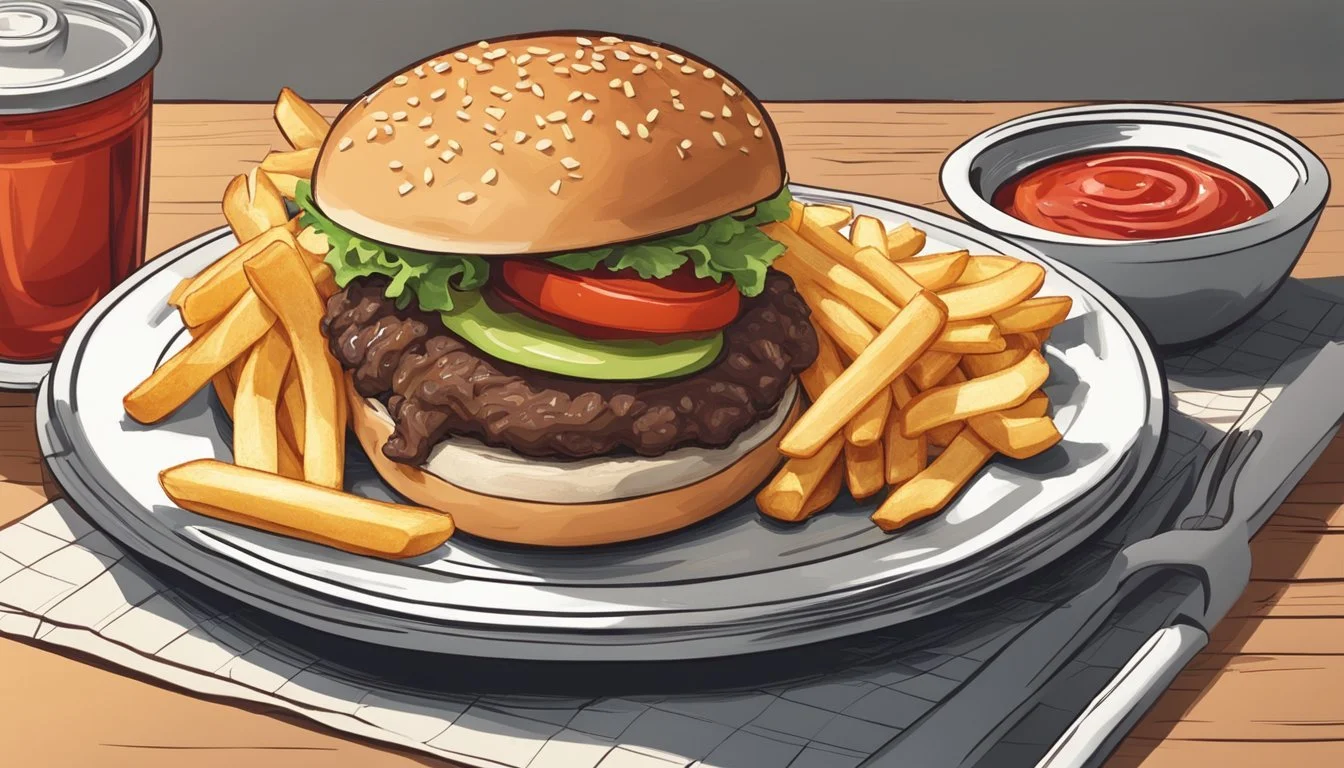How Do You Eat a Beef Slider?
Tips for Enjoying This Miniature Treat
Beef (What wine goes well with beef?) sliders, often referred to as mini burgers, are a staple at casual gatherings and an enjoyable finger food that offers the savory experience of a traditional burger in a convenient, bite-sized package. They are typically prepared with small, palm-sized beef patties placed between equally petite buns. Sliders present a versatile menu item, easily adaptable to a wide range of flavors and toppings, from classic cheese and onions to more gourmet combinations like blue cheese and arugula.
The beauty of beef sliders (What wine goes well with beef sliders?) lies in their simplicity and the communal experience they foster. They are designed to be eaten with hands, making them a perfect addition to social events where guests can interact and enjoy food without the need for formal cutlery. Each slider can be consumed in just a few bites, inviting diners to sample multiple variations without committing to a single, large burger.
The approach to eating a beef slider may be straightforward, but there is an art to perfecting the overall balance of the components. Cooks must consider the patty's seasoning, the choice of cheese, the layering of condiments, and the type of bun, ensuring that each small burger delivers a burst of flavor that belies its modest size. When done well, beef sliders can easily become the highlight of a meal or party spread, satisfying both the palate and the desire for a casual, yet delectable dining experience.
The Essentials of Slider Preparation
In preparing the perfect beef slider, one must consider the quality of the meat, the choice of buns, the flavoring agents, and precise cooking methods to ensure a delightful mini burger experience. Each component plays a pivotal role in creating a dish that balances taste and texture, whether served as an appetizer or a main course.
Choosing the Right Beef
Selecting high-quality ground beef is paramount for sliders that are both flavorful and juicy. Opt for a cut that ensures a balance between lean and fat, usually around 80/20, which keeps the patties moist without being greasy.
Selecting the Perfect Buns
Slider buns should be soft yet sturdy enough to hold the meat and toppings. Hawaiian rolls or dinner rolls are popular choices because of their slight sweetness and ability to complement the savory beef. They should be sliced in preparation for the assembly.
Crafting the Flavor Profile
Season the ground beef with a mix of salt, pepper, garlic powder, and onion powder to enhance its natural flavors. Complementary condiments like mustard, mayo, or horseradish can be mixed to create flavorful spreads. Pickle slices add a crisp tang that cuts through the richness of the beef.
Assembling the Sliders
Assemble sliders by dividing the seasoned beef into small patties and placing them on the cut buns. Top with a slice of cheese, such as American, provolone, or cheddar, to achieve melted cheese perfection. Additions like tomatoes or a dollop of horseradish mayo can be layered in.
Cooking Techniques
The method of cooking can vary: sliders can be grilled to imbue a smoky flavor, or baked for an easy and even cook. Baking typically involves preheating the oven and cooking until the cheese has melted and the beef is thoroughly cooked.
Finishing Touches
A final brush of melted unsalted butter over the buns can add a golden, flavorful crust. Serving the sliders warm, potentially with a side of au jus for dipping, ensures that the array of flavors and textures are appreciated at their peak.
Serving and Presentation
When serving beef sliders, their presentation and accompaniments can turn them from simple sandwiches into an appealing main course or appetizer. They are popular game day food but can also be an enticing option for a variety of casual gatherings.
Side Dish Pairings
One should consider complementing beef sliders with side dishes that balance the meal. Classic side dish options include:
French fries or sweet potato fries: These are crispy and offer a sweet or savory counterbalance.
Coleslaw: Provides a creamy and tangy contrast to the richness of the sliders.
Salad: Offers a light and healthy option.
Onion rings: Add a satisfying crunch that pairs well with the soft texture of sliders.
Saucing and Condiments
The right condiments can enhance the flavor of beef sliders. It's ideal to offer a range of options:
Ketchup: A classic choice that provides sweetness and tanginess.
Mayonnaise: Adds a creamy texture and mellows out stronger flavors.
Horseradish sauce: Offers a spicy kick that's especially complimentary to beef.
Worcestershire sauce: Could be mixed into the patty mix for umami depth or served on the side.
Garnishing for Aesthetic Appeal
Garnishes not only add visual appeal but also introduce new flavors and textures. Beef sliders can be garnished with:
Pickles: Add a burst of acidity and crunch.
Tomatoes and lettuce: Contribute freshness and color.
Caramelized onions: Lend a touch of sweetness.
Avocado slices: Offer a creamy element.
Each beef slider serves as its own canvas for a host to showcase creativity through careful selection of toppings, sauces, and garnishes.
Advanced Slider Variations
Exploring advanced slider variations opens up a world of flavor and ingenuity. Moving beyond the classic miniature beef patties on dinner rolls, these variations introduce international influences, a variety of meats, specialty breads, and a diverse cheese selection.
International Flavors
Sliders can be a passport to international cuisines, offering an array of global taste experiences. Recipe creators might draw inspiration from Mexican cuisine, utilizing chipotle flavors and avocado, or perhaps incorporate Greek tzatziki and feta cheese for a Mediterranean twist. The key is to infuse each slider with a distinct characteristic of world cuisine, whether that's an exotic spice blend from North Africa or a zesty chimichurri sauce hailing from Argentina.
Experimenting with Meats
While traditional sliders may focus on a classic beef patty, experimenting with meats can transform the slider experience. One might opt for shredded beef sliders, slow-cooked and tender, or perhaps try a variation with roast beef for a satisfying texture contrast. Adventurous chefs may even turn to pulled pork or ground lamb to create sliders that truly stand out. Each meat choice imparts its unique flavor and texture, making this an essential area for customization.
Roast Beef: Offers a robust flavor; pairs well with creamy horseradish.
Ham: Lighter option; excellent with Swiss cheese and a touch of honey mustard.
Lamb: Rich and earthy; complements bold spices like cumin or coriander.
Specialty Breads
The foundation of any slider is the bread, and selecting the right canvas is crucial. Artisanal buns, pretzel rolls, or even ciabatta can elevate a slider from ordinary to exceptional. A Hawaiian sweet roll adds a touch of sweetness, harmonizing with savory meats, while a crusty sourdough may bring a pleasant tartness and chew. Baked bread choices should be both sturdy enough to hold up to the fillings and soft enough for easy eating.
Cheese Selections
Cheese is the melty crown of a slider, with each variety contributing a unique profile. Provolone cheese offers a smooth, mild taste, while an aged cheddar cheese brings a sharper, more pronounced flavor. It's important to match the cheese to the other ingredients harmoniously; for instance, a bold blue cheese works well with robust meats like steak, but a creamy brie may be better suited to a lighter turkey patty. The goal is to achieve balance, enhancing the overall flavor of the slider.
American Cheese: Classic, melts well, universally enjoyed.
Provolone: Smoky and mild, good for meat-heavy sliders.
Cheddar Cheese: Sharp taste, complements stronger flavors.
Pepper Jack: Spicy kick, good for sliders with a Southwestern flair.
Gouda: Rich and buttery, pairs nicely with ham or smoked meats (What wine goes well with smoked meats?).
From international inspirations and varied meats to distinctive breads and cheeses, advanced slider variations invite one to create miniature masterpieces that are as delightful to look at as they are to eat.
Reheating and Storage
When it comes to enjoying a beef slider, ensuring that it is properly stored and reheated is crucial for maintaining freshness and achieving the best possible quality. This section outlines effective methods for storing sliders and reheating them to keep the snack as enjoyable as when first made.
Proper Storage Techniques
For optimal freshness, sliders should be kept in an airtight container or tightly wrapped with plastic wrap. Beef sliders can be made ahead of time and stored in the refrigerator, where they will stay fresh for up to 3 days. For long-term storage, they can be frozen individual sections separated by parchment paper to prevent sticking and then placed in freezer-safe bags or containers. Freezing can keep them fresh for 1 to 2 months.
Reheating for Best Quality
To maintain the quality of beef sliders, reheating should be done carefully to avoid drying out the meat and to preserve the texture of the buns. Here is a step-by-step guide for reheating:
Preheat: Set the oven to 350°F (175°C).
Prepare Sliders: Place the sliders on a baking sheet lined with parchment paper.
Cover: Cover the sliders loosely with aluminum foil to keep them moist.
Reheat: Heat the sliders for 10-15 minutes if they are refrigerated or up to 30 minutes if they are frozen. Check periodically to ensure they aren't overheating.
Serve: Sliders should be consumed immediately after reheating for the best taste and texture.
Using the oven to reheat beef sliders ensures even warming without compromising the quality of the snack.
Health and Nutrition
When enjoying a beef slider, one's awareness of its nutritional content and how it fits into a balanced meal can contribute greatly to maintaining a healthy diet.
Understanding Nutritional Content
A typical beef slider comprises a small beef patty served on a mini bun, and may include toppings such as cheese, lettuce, and tomato. Nutritional info for a main dish like a beef slider can vary widely depending on the ingredients and portion size. For instance, a single Arby's roast beef slider contains approximately 200 calories. Nutritional values also depend on factors such as the type of beef used; choosing a lean cut can reduce fat intake.
Nutrient Amount Calories ~200-850 Total Fat Varies Saturated Fat Varies Proteins Varies
Balancing the Meal
To incorporate beef sliders into a balanced diet, accompanying them with nutritious sides is key. They should be part of a meal that includes a variety of food groups. Vegetables like lettuce, tomato, and cucumber add fiber and nutrients with minimal calories.
Vegetable Toppings: Lettuce, tomato, cucumber
Healthy Sides: Green salads, coleslaw with a vinegar base, steamed vegetables
High-Calorie Sides to Limit: French fries, onion rings, high-sugar soft drinks
Pairing beef sliders with high-calorie sides should be done cautiously, as it can quickly turn a seemingly small meal into a calorie-dense one. For a more nutritious option, one might choose sliders made with extra-lean ground beef and whole-wheat buns, while being mindful of portion sizes.
Food Safety and Handling
When preparing beef sliders, it is crucial to prioritize food safety and handling to prevent foodborne illnesses. This entails taking steps to prevent cross-contamination and ensuring that beef is cooked to safe temperatures.
Preventing Cross-Contamination
Use separate cutting boards: One for raw beef and another for fresh produce to prevent cross-contamination.
Wash hands and surfaces: After handling raw beef, individuals should thoroughly wash their hands and all surfaces the beef has contacted.
Safe Cooking Temperatures
The following table provides the safe minimum internal temperatures for different levels of doneness when cooking beef sliders:
Doneness Temperature Medium Rare 145°F (62.8°C) Medium 160°F (71.1°C) Well-Done 165°F (73.9°C) or higher
Use a food thermometer to ensure these temperatures are reached to destroy harmful bacteria. To avoid burning and ensure even cooking, cook beef sliders over a medium heat source, flipping them only once during cooking.
Culinary Inspiration
Exploring the world of beef sliders through the lens of famous chefs grants insight into creative recipes and expert techniques.
Famous Chef Recipes
Famous chefs often share their unique takes on popular dishes like beef sliders. Recipes from culinary experts not only showcase the rich flavors that can be achieved with various seasonings but also the techniques that enhance the overall dining experience.
Ina Garten, a renowned chef known for her home-style cooking, might elevate a simple beef slider by focusing on fresh ingredients and homemade buns, infusing the dish with an irresistible homemade quality. Her recipes typically emphasize the importance of aroma and baked perfection.
A classic slider recipe from a professional kitchen could involve:
Caramelized onions: Cooked low and slow to ensure they are fragulously sweet and tantalizingly golden.
Baked buns: Achieving the perfect texture, slightly crispy on the outside and soft on the inside.
Well-seasoned patties: Typically seasoned with salt, pepper, and sometimes custom spice blends for exceptional flavor.
By incorporating these elements, any home cook can create a slider that might rival those served in prestigious eateries.
Planning and Hosting
f
When hosting an event where beef sliders are the main attraction, whether it be a lunch( What wine goes well with lunch?), a game day gathering, a casual get-together, or simply as appetizers (What wine goes well with appetizers?), one's planning must center on two crucial elements: quantity and quality. The host should ensure there is a sufficient number of sliders to satisfy the guests' appetites, while also considering the sliders' role in the meal.
Quantities for Events
The number of beef sliders to prepare hinges on the nature of the occasion. For a lunch setting, where sliders are likely the main course, one should plan for 2-3 sliders per person. As appetizers or snacks, one slider per person, possibly two if no other major food is served, should suffice.
Game Day Food, on the other hand, often demands more substantial amounts. It's a safe bet to prepare at least 3-4 sliders per person, as guests tend to have heartier appetites during these events.
Here's a quick reference table to help with the planning:
Event Type Sliders per Person Total Sliders for 10 People Role in Meal Lunch 2-3 20-30 Main Course Appetizer 1-2 10-20 Snack Game Day 3-4 30-40 Hearty Snack
The host should always round up their estimate to account for unexpected guests or particularly high appetites. It's better to have a few leftovers than to run out of food prematurely. Additionally, considering the guests’ dietary preferences or restrictions ahead of time can ensure that everyone enjoys the event without complications.









